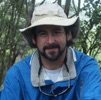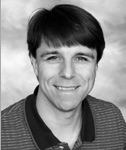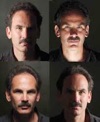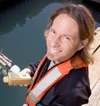The NOAA Fisheries Strategic Initiative on Automated Image Analysis team is comprised of governmental, academic, and private industry representatives.
Benjamin L. Richards (Chair)
NOAA Pacific Islands Fisheries Science Center

Ben completed his PhD in Zoology at the University of Hawaii in 2011, where he studied the ecology and patterns in habitat preference of large-bodied reef fish. In 1998 Ben joined the NOAA Florida Keys National Marine Sanctuary (FKNMS) to assist with the development of the FKNMS Research and Monitoring Plan and Final Environmental Impact Statement. In 2004 Ben moved to the Coral Reef Ecosystem Division of the NOAA Pacific Islands Fisheries Science Center (PIFSC) in Honolulu, modeling the distribution of Pacific reef fish abundance and biomass associated with various natural and anthropogenic environmental factors. Input data for these studies predominantly resulted from diver-based visual surveys. Inter-observer variation and the paucity of data from below diver depths pushed his research toward the use of camera-based technologies for optical sampling. Since moving to the PIFSC Stock Assessment Division in 2010, his research has focused on the use of advanced fishery-independent sampling technologies, including optical camera systems, to assess species-specific, size-structured abundance for Hawaii bottomfish assemblages. The volume of data produced by these camera systems has quickly overwhelmed the capabilities of human analysts. His research focus has thus expanded to include the development of automated classification algorithms to produce species-specific, size-structured abundance estimates from underwater optical surveillance video of reef and bottomfish.
Ben currently serves as a member of the National Marine Fisheries Service Advanced Sampling Technology Working Group and is chair of the NMFS Strategic Initiative on Automated Image Analysis. His research currently focuses on the distribution of marine resources along gradients of natural and anthropogenic factors and how advanced sampling technologies and automated analysis tools can provide enhanced data for stock assessment and ecosystem-based management.
Alexandra BranzAn Albu
University of Victoria

Alexandra Branzan Albu completed her Ph.D. In Electrical Engineering at the Polytechnic University of Bucharest in 2000. From 2001 to 2003, she was a postdoctoral researcher in the Computer Vision and Systems Laboratory at Laval University, (Quebec, Canada). In 2004, she became an Assistant Professor in the GEL-GIF Department at Laval University. In 2005 she joined the Department of Electrical and Computer Engineering at the University of Victoria (BC, Canada) as an Assistant Professor and was promoted to Associate Professor in 2009. Her research interests include computer vision, more specifically the practical applications of this discipline. Her research group is currently working on several projects, including underwater image analysis, electronic document image analysis, the analysis of mountain range landscapes in order to detect climate changes etc. She is currently collaborating with Ocean Networks Canada to develop automation methodologies for underwater video acquired by their cabled observatory. Her research is funded by industrial partners such as SAP Canada and also by Canadian federal funding agencies such as NSERC and MITACS.
Elizabeth Clarke
NOAA Northwest Fisheries Science Center
George “Randy” Cutter
NOAA Southwest Fisheries Science Center
Randy Cutter’s research focuses on developing and implementing advanced tools and techniques for remotely sensing marine organisms. He has developed underwater imaging systems and methods for multi-beam echosounders that have improved our ability to detect, locate, and identify fish and other organisms to improve biological assessments as well as increase resolution and characterization of the seabed and habitats. He is working to develop methods for automated detection and classification of fish and other animals in imagery from underwater images, including stereo-cameras and tools for measuring fish from stereo imagery and creating dense three-dimensional reconstructions of the seabed and demersal fish. Randy has also led the development of the NMFS Fisheries AUV.Duane Edgington
Monterey Bay Aquarium Research Institute
Duane Edgington’s research focus is in software engineering for research vehicles and instruments, with a focus on software systems that support ocean observatories. He is currently working on a project to develop software to analyze video and still camera imagery from cameras deployed underwater. He and his collaborators have developed an automated system for detecting and classifying organisms, in which frames are processed with a neuromorphic-selective attention algorithm.
Dvora Hart
NOAA Northeast Fisheries Science Center
Dvora Hart is a stock assessment scientist at the Northeast Fisheries Science Center. She is involved in all aspects of scallop stock assessment including development of new tools to assess scallop stocks and the development of new methods, including crowd-sourcing, to automate the analysis of optical data streams collected by the HabCam towed survey platform.
Anthony Hoogs
Kitware Inc.
Dr. Hoogs joined Kitware in August 2007 and founded the
Computer Vision group. For more than two decades, he has supervised and performed research in various areas of computer vision including: event, activity and behavior recognition; motion pattern learning and anomaly detection; tracking; visual semantics; image segmentation; object recognition; and content-based retrieval. He has led projects, sponsored by commercial companies and government entities including DARPA, AFRL, ONR, I-ARPA and NGA, that range from basic, academic research to developing advanced prototypes and demonstrations installed at operational facilities.
At Kitware, Dr. Hoogs supervises the Computer Vision group and leads business development efforts in this area. Recently he was the overall Principal Investigator on large DARPA programs including the Video and Image Retrieval and Analysis Toolkit (VIRAT) and the Persistent Stare Exploitation and Analysis System (PerSEAS), with responsibility for overseeing more than twelve universities and nine commercial subcontractors. He has initiated and led more than two dozen contracts in video and motion analysis with a combined value of tens of millions of dollars. At GE Global Research (1998-2007), Dr. Hoogs led a team of researchers in video and imagery analysis on projects sponsored by the US Government, Lockheed Martin and NBC Universal. His government-sponsored projects there included Video Analysis and Content Extraction (I-ARPA) and Dynamic Database (DARPA).
Dr. Hoogs received a Ph.D. in Computer and Information Science from the University of Pennsylvania in 1998; an M.S. from the University of Illinois at Urbana-Champaign in 1991; and a B.A. magna cum laude from Amherst College in 1989. He has published more than 60 papers in computer vision, pattern recognition, artificial intelligence and remote sensing. His academic service includes: Area Chair for IEEE Conference on Computer Vision and Pattern Recognition (2009, 2010, 2012); Corporate Relations Chair for CVPR (2009, 2010) and the IEEE International Conference on Computer Vision (2013); Program Co-Chair for the IEEE Workshop on Applications in Computer Vision (2009, 2011); Steering Committee member for WACV; organizer and co-chair of the IEEE Workshop on Perceptual Organization in Computer Vision (2004); organizer and co-chaired of the IEEE International Workshop on Semantic Knowledge in Computer Vision (2005). He has served on technical panels for NSF and DARPA, including DARPA Information Science and Technology (ISAT) panels in 2007, 2009 and 2013. He regularly serves on program committees for the primary computer vision conferences and workshops (ICCV, CVPR, ECCV, WACV, AVSS) and is a reviewer for premier journals in computer vision and artificial intelligence (PAMI, IJCV, CVIU, MVA, TIP, TMM, AIJ).
David Kriegman
University of California, San Diego
David J. Kriegman received a B.S.E. degree in Electrical Engineering and Computer Science from Princeton University in 1983, and an M.S. degree in 1984 and Ph.D. in 1990 in Electrical Engineering from Stanford University. Since 2002, David Kriegman has been a Professor of Computer Science and Engineering in the Jacobs School of Engineering at the University of California, San Diego. Prior to joining UCSD, he was an Assistant and Associate Professor of Electrical Engineering and Computer Science at Yale University (1990-1998) and an Associate Professor with the Computer Science Department and Beckman Institute at the University of Illinois at Urbana-Champaign (1998-2002). Kriegman was founding CEO and presently serves as Chief Scientist of Taaz, Inc, the leader in photorealistic virtual try on.
Kriegman's research is in computer vision with particular application to face recognition, robotics, computer graphics, microscopy, and coral reef ecology. Kriegman was chosen for an NSF Young Investigator Award, and has received best paper awards at the 1996 IEEE Conference on Computer Vision and Pattern Recognition (CVPR), the 1998 European Conference on Computer Vision, and the 2007 International Conference on Computer Vision (Marr Prize, runner up) as well as the 2003 Paper of the Year Award from the Journal of Structural Biology. He has served as Program Co-chair of the IEEE Conference on Computer Vision and Pattern Recognition (CVPR) in 2000 and General Co-chair of CVPR 2005. He has been an Associate Editor, Associate Editor-in-Chief, and the Editor-in-Chief (2005-2008) of the IEEE Transactions on Pattern Analysis and Machine Intelligence (TPAMI). In 20113, he became a member of the NOAA NMFS Automated Image Analysis Strategic Initiative committee, and on the planning committee of the 2014 NRC Workshop on Robust Methods for the analysis of images and videos for fisheries stock assessment.
Clay Kunz
Google, Inc.
Clay Kunz is a working member of the Google drive-less car project. Clay has worked on underwater imaging and mapping, as well in application of computer vision algorithms to large data sets of underwater imagery. His research intersects several disciplines, including Computer Science, Ocean Engineering, Oceanography, and Mechanical Engineering. Prior to his employment at Google, he worked at WHOI as well as at NASA Ames Research Center in the intelligent robotics group, at start-up company Mobot, building robotic tour guides for museums, and at SGI, working on data mining and machine learning software. He is currently a collaborator on a Moore Foundation project on ocean informatics, which supports new advances in imaging informatics in the field of oceanography by supporting development of innovative informatics approaches. The focus of this work is to infuse data integration capabilities into ocean sensor systems designed via scientist-informaticist partnerships.
Michael Piacentino
SRI International
Michael Piacentino is technical director of the Vision Systems Laboratory in SRI International’s Center for Vision Technologies. He manages a team of more than 25 vision algorithm, hardware and software architects in the development of state-of-the-art vision systems, including embedded mobile platforms.
Specializing in the development of real-time vision hardware and software solutions for over 30 years, Piacentino has been SRI’s embedded vision and system lead on numerous Defense Advanced Research Projects Agency (DARPA), Army, Navy, and other government and commercial programs. His professional competence includes hardware system and chip design for video processing algorithms, with emphasis on real-time vision solutions, electronic systems, video processing design and algorithm implementation.
Lakshman Prasad
Los Alamos National Laboratories
Dr. Lakshman Prasad is a Scientist 4 at the Los Alamos National Laboratory in the Space Data Systems group of the Intelligence and Space Research division. He is also an affiliate research scientist at the New Mexico Consortium in Los Alamos. His current research interests are in the areas of remote sensing image analysis, algorithm development for big data analysis, computer vision, artificial perception, multiresolution techniques, wavelet-based signal and image processing, computational geometry, statistical image analysis, marine and ecological image analysis. He has been principal investigator on several DOE projects, published several papers in the area of Image and signal analysis, and the author of five patents in image analysis.
Charles Thompson
NOAA Southeast Fisheries Science Center
Charles’ current research is focused on the development of technology, including stereo-imaging and automated image analysis, to study living marine resources and their habitat. His area of interest also includes underwater and fisheries acoustics, acoustic scattering, and applications of multibeam sonar. His lab has been involved in the development of autonomous underwater vehicle (AUV) technology and applications. Prior to employment with NOAA Fisheries, Charles’ research was primarily focused on low frequency acoustic scattering from fish and implications for Navy low frequency active sonar performance. His University studies included research on the optoacoustic effect (sound production through pulsed light absorption) and coupling of atmospheric sound into the ground.
Kresimir Williams
NOAA Alaska Fisheries Science Center
Kresimir Williams’ research has focused in the use of cameras to improve surveys and understand trawl catchability. He leads research on the development of the CamTrawl, a camera system to supplement and expand survey trawl sampling. He also has led efforts at the AFSC and with the ASTWG in the automated processing of optical data. He is the lead collaborator on a project at the university of Washington funded by the ASTWG on the automated processing for optical data from the video cameras used on the CamTrawl and also the lead organizer or several workshops on optical methods funded by the ASTWG.
William Michaels (Program Manager)
NOAA Office of Science & Technology










